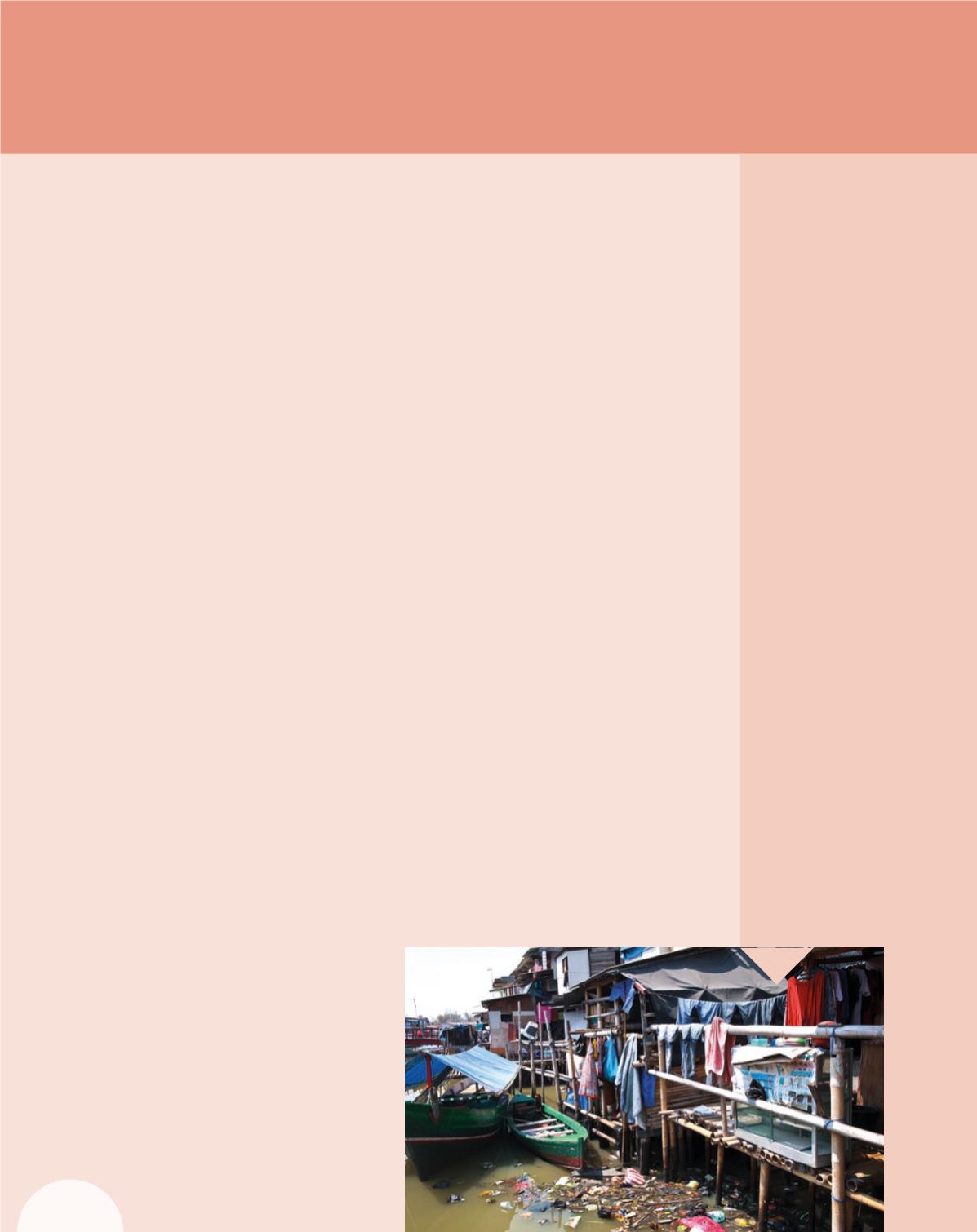
16
Jakarta is one of the most crowded cities in
the world. The population density is 14,000
people per 0.4 square miles (1 sq km). It is
growing faster than the rest of Indonesia as
people migrate to the city to find work. This
overcrowding adversely affects life in the
capital in many ways. Jakarta is low on the
list of “best cities to live in,” with a rank of
125 out of 140.
HOUSING SHORTAGES
Some
Batawi
(residents of Jakarta) live in
gated luxury houses or in high-rise blocks.
But most cannot afford to buy or rent such
homes. They live in slums called
kampungs
and other illegal settlements or in cheaper
homes in the sprawling metropolitan area.
TRANSPORTATION
Millions of people commute to work each
day, but public transport is limited. Trains
are often so full that people ride on the roof!
As a result of poor public transportation and
increasing wealth, more Batawi are choosing
to drive to work. This results in daily traffic
jams and poor air quality. The economic
costs of health problems and lost working
hours are estimated at around $5 billion
each year. The growth of car ownership is
placing a strain on Jakarta’s roads. Many
roads are inadequate or in disrepair. In
2010, a 330-foot (100 m) section of
four-lane highway collapsed into a river
in north Jakarta.
FLOODS AND SANITATION
Jakarta regularly floods in the rainy season.
Due to the demand for land to build on,
Jakarta has few parks and marshland areas that
can absorb floodwater. Drainage is slow as
the River Ciliwung and canals are blocked
with waste—often from kampungs along the
banks. Most people, except those in slums,
have piped water, but sanitation is often
poor. Most sewage goes straight into the
river, where the poorest also wash.
SOLUTIONS
The government is making or considering
improvements to living conditions in
Jakarta. The Kampung Improvement
Program is an ongoing government plan
to improve housing quality and access to
sanitation. Public transportation congestion
will be eased by the construction of
the Jakarta metro that is expected to be
complete by 2016. In the meantime, the
government has introduced fines for people
who drive into the city without passengers.
However, “jockeys” are on the increase—
people whom single drivers pay to get in
their cars for less than the cost of the fine!
FOCUS ON JAKARTA: BUSY CITY
A riverside slum
(kampung) is near
the business district
of central Jakarta.
An estimated 25
percent of residents
live in slum
settlements like
these.


